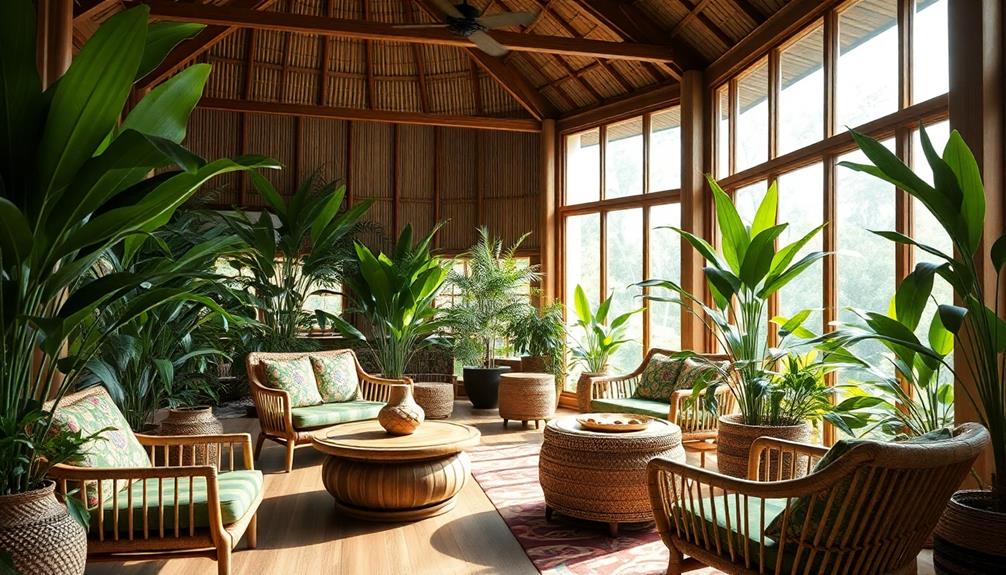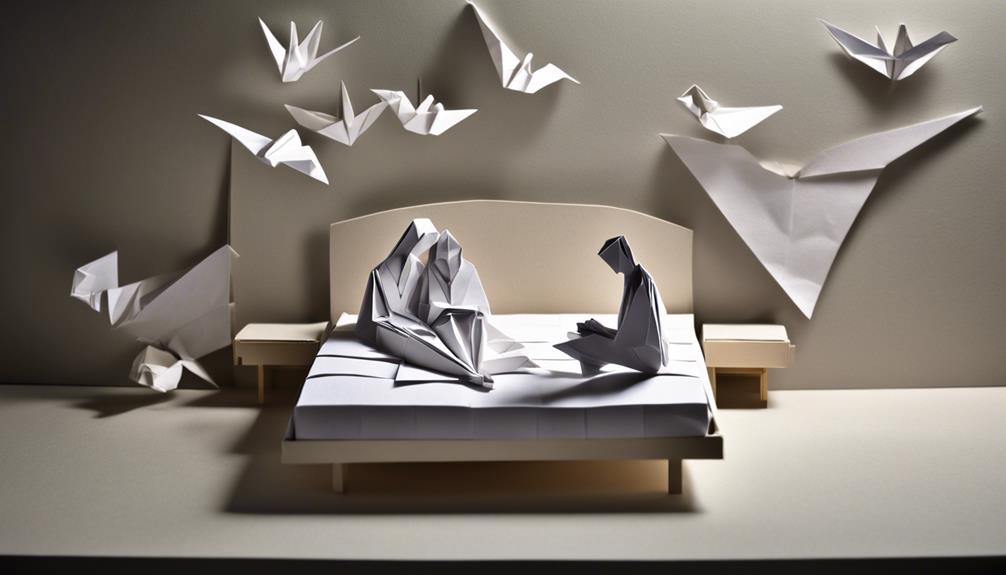Certain foods are considered therapeutic in various traditions because they've been historically linked to health benefits. Cultures like those in Traditional Chinese Medicine (TCM) and Ayurveda understand food's role in maintaining balance and liveliness. They assess foods based on properties and qualities that enhance well-being. For instance, turmeric is valued for its anti-inflammatory powers, while ginger aids digestion. These traditions emphasize holistic approaches, recognizing that dietary choices can profoundly impact health. Exploring these connections reveals the rich history and science behind these practices, offering you insights into how food can be part of your health journey.
Key Takeaways
- Traditional practices, such as TCM and Ayurveda, classify foods based on their properties and effects on health, emphasizing their therapeutic potential.
- Foods are categorized by taste and qualities, with specific health benefits linked to their consumption, like turmeric for inflammation and ginger for digestion.
- Historical texts document the healing properties of foods, reinforcing their role in maintaining health and preventing disease across various cultures.
- Seasonal and locally sourced foods are prioritized in dietary therapies, enhancing their therapeutic benefits by aligning with the body's natural rhythms.
- Modern research validates traditional knowledge, revealing bioactive compounds in foods that support health and manage chronic diseases.
Historical Context of Food as Medicine
Throughout history, countless cultures have recognized the profound connection between food and health, establishing food as an essential component of healing practices.
You'll find that the concept of food as medicine has deep roots in both Eastern and Western traditions. The Hippocratic Corpus in the West and Shennong's Classic of Materia Medica in the East laid the groundwork for dietary therapy, illustrating how certain foods can promote health and alleviate ailments.
In Japan, traditional foods like Dorayaki not only provide comfort but also contribute to a sense of well-being, further emphasizing the cultural significance of food in health.
In Traditional Chinese Medicine (TCM), dietary therapy takes precedence, focusing on balancing Yin-Yang through the five tastes to enhance well-being. Similarly, Ayurveda, which dates back to the 2nd century CE, tailors food choices based on individual dosha status and specific health conditions.
Historical texts like the Charaka Samhita and Shiliao Bencao detail various foods' healing properties, emphasizing their roles in maintaining health and treating illnesses.
This universal understanding of the food-medicine continuum showcases how cultures have long valued food's therapeutic potential.
Today, these ancient principles continue to influence contemporary healthcare, reminding you that what you eat can greatly impact your health and healing journey.
Eastern Dietary Therapy Practices
When you explore Eastern dietary therapy practices, you'll find that both Traditional Chinese Medicine and Ayurveda offer unique approaches to food as medicine.
In TCM, balancing Yin-Yang through the five tastes plays a vital role in restoring health, with dishes such as Red-Braised Pork Belly providing rich flavors that nourish the body.
Meanwhile, Ayurveda focuses on classifying foods to align with your individual dosha.
Understanding these principles can empower you to make dietary choices that enhance your well-being.
TCM Dietary Principles
In Traditional Chinese Medicine (TCM), dietary therapy plays an essential role in maintaining health and preventing illness. You'll find that TCM categorizes therapeutic foods based on their properties and their effects on the body's Yin-Yang balance. This approach emphasizes the importance of the five tastes: pungent, sweet, sour, bitter, and salty, which all contribute to your overall well-being.
For instance, incorporating nutritious seasonal ingredients like fresh nettles or heirloom beans can enhance your diet's therapeutic properties.
The principles of TCM dietary therapy are detailed in texts like Shiliao Bencao, where foods are classified by their ascending, descending, floating, and sinking properties. This classification helps address various health conditions effectively.
In TCM, food isn't just for sustenance; it's seen as medicine. Your dietary choices greatly influence your health management and are tailored to your individual constitution and specific health needs.
Moreover, traditional practices in TCM encourage you to consume seasonal and locally sourced foods. By aligning your dietary habits with the natural environment, you can enhance the therapeutic benefits of the foods you eat.
Embracing these TCM dietary principles can lead to a more balanced lifestyle and improved health outcomes.
Ayurvedic Food Classification
Ayurvedic food classification offers a holistic approach to nutrition, focusing on the unique qualities of each food and its impact on your health. This traditional system classifies foods based on five key principles, guiding their therapeutic effects to meet your healthcare needs.
For instance, dishes like Mushroom Masala and Gobi Manchurian aren't only delicious but also embody various tastes and qualities that can support overall well-being.
Here are some essential components of Ayurvedic food classification:
- Rasa (Taste): Each taste—sweet, sour, salty, bitter, and pungent—provides specific health benefits. For instance, sweet foods nourish and energize, while bitter foods support detoxification.
- Guna (Effects): Foods are categorized by their qualities, such as heavy or light, which influence digestion and energy levels.
- Virya (Thermal Effect): Foods are classified based on their heating or cooling effects, impacting their use in different seasons or health conditions.
- Vipaka (Post-Digestive Effect): This principle considers how foods affect your body after digestion, ensuring balanced nutrition.
- Karma (Action): The actions of foods determine their therapeutic uses, particularly in addressing individual dosha imbalances.
Traditional Chinese Medicine Insights
Understanding Traditional Chinese Medicine (TCM) reveals how food plays an essential role in health and healing. In TCM, food therapy isn't just about nutrition; it's a crucial component of dietary therapy. Foods are categorized by their properties and effects on the body, helping maintain balance between Yin and Yang through the five tastes: pungent, sweet, sour, bitter, and salty.
Additionally, the integration of diverse ingredients, similar to how Brazilian cuisine features traditional dishes that reflect cultural influences, can enhance the therapeutic effects of meals.
Each individual has unique health needs, so TCM practitioners tailor recommendations based on whether foods are ascending, descending, floating, or sinking. Historical texts like the Shiliao Bencao document the therapeutic properties of various foods and medicinal plants, showcasing their dual-use as both nourishment and medicine.
Meals are viewed as opportunities for healing, where ingredient choices greatly impact health and disease prevention. Figures like Zhongjing Zhang illustrate the belief that dietary therapy often takes precedence over medical interventions, emphasizing the healing power of food.
Ayurveda and Food Healing
Exploring food healing in Ayurveda reveals a system that prioritizes balance and individual needs, much like Traditional Chinese Medicine. In Ayurveda, food isn't just sustenance; it's a therapeutic tool for enhancing health. The approach is holistic, focusing on how different foods affect your body based on five key properties: Rasa (taste), Guna (effects), Virya (thermal effect), Vipaka (post-digestive effect), and Karma (action).
Much like how traditional dishes such as Muamba De Galinha are carefully prepared to celebrate cultural significance, Ayurveda emphasizes the importance of mindful eating.
To help you understand how Ayurveda tailors dietary choices, consider these aspects:
- Individual Dosha: Foods are recommended based on your unique Vata, Pitta, or Kapha type.
- Therapeutic Ingredients: Turmeric fights inflammation, while ginger aids digestion.
- Food Combinations: Pairing ghee with spices enhances nutrient absorption.
- Balancing Flavors: Each meal should incorporate diverse tastes to support overall health.
- Lifestyle Integration: Dietary choices are woven into broader lifestyle practices for best well-being.
With Ayurveda, you're encouraged to embrace food as a powerful ally in your journey to health, emphasizing the importance of personalized nutrition and mindful eating.
Food-Medicine Dual-Use Examples
When you explore the cultural significance of certain foods, you'll find many are celebrated not just for their flavor but also for their health benefits.
For instance, traditional Ethiopian dishes like Yekolo (Roasted Barley) are rich in fiber and nutrients, contributing to overall well-being.
Ingredients like turmeric and licorice serve as perfect examples of how food can function as medicine in various traditions.
Understanding these dual uses can deepen your appreciation for both culinary and therapeutic practices.
Cultural Significance of Foods
Many cultures around the world recognize the dual purpose of food as both nourishment and medicine, reflecting deep-rooted traditions that intertwine culinary practices with health benefits. This cultural significance often stems from traditional uses that highlight the medicinal properties of various foods.
For instance, in Traditional Chinese Medicine (TCM), ginger and garlic are revered for their warming properties that aid digestion and boost immunity. Similarly, Ayurveda promotes turmeric for its anti-inflammatory benefits. In Korean cuisine, ingredients like fermented vegetables, particularly kimchi, are also celebrated for their probiotic qualities that support gut health.
Understanding these food practices can deepen your appreciation of how certain ingredients are integrated into daily life. Here are some notable examples:
- Ginseng: Valued for its adaptogenic qualities, helping you manage stress.
- Chrysanthemum flowers: Used for their cooling properties to reduce inflammation.
- Moringa: Known for its rich nutritional profile and health benefits.
- Jackfruit: Often incorporated for its vitamins and potential to aid in diabetes management.
- Turmeric: Celebrated for its active compound curcumin, which supports joint health.
Common Therapeutic Ingredients
Therapeutic ingredients often bridge the gap between culinary enjoyment and medicinal benefits, providing you with powerful tools for enhancing your health. Foods like turmeric, widely recognized in both Ayurvedic and traditional Chinese medicine (TCM), are revered for their active compounds. Curcumin, found in turmeric, offers potent anti-inflammatory and antioxidant properties, making it a staple in therapeutic diets.
Additionally, traditional Indonesian dishes such as Kue Putu highlight the use of natural ingredients like coconut and palm sugar, which can also provide health benefits.
Ginger's value lies in its ability to support digestive health, commonly used to alleviate nausea and promote gut function. In TCM, ginseng is believed to enhance energy and vigor levels, with research backing its potential to improve both physical performance and cognitive function.
Chrysanthemum flowers are another example, traditionally utilized in TCM to promote eye health and reduce inflammation. Their nutritional value showcases how food can play a role in wellness.
Health Benefits Explored
Throughout history, food has served not only as sustenance but also as a means of healing. For instance, traditional dishes like Turkey Soup made from leftover turkey aren't only comforting but also packed with nutrients that can support recovery during illness.
You might be surprised at how various foods can offer therapeutic benefits, especially when considering traditional Chinese medicine and other holistic practices. Here are some notable examples of food that double as medicine:
- Turmeric: Known for its anti-inflammatory and antioxidant properties, it helps alleviate chronic pain.
- Ginger: A go-to for digestive health, it effectively combats nausea and enhances gastrointestinal function.
- Chrysanthemum flowers: Used in TCM to support eye health by reducing inflammation and improving vision clarity.
- Ginseng: This energizing root boosts energy and promotes overall well-being, popular in both Eastern and Western medicine.
- Jackfruit: Noted for its potential antidiabetic and cancer-fighting effects due to its bioactive compounds.
Incorporating these foods into your diet can provide significant health benefits that may aid in the prevention and management of chronic diseases.
Embracing the dual-use nature of these ingredients not only enriches your meals but also supports your journey toward better health.
Cultural Perspectives on Therapeutic Foods
Exploring cultural perspectives on therapeutic foods reveals a rich tapestry of beliefs and practices that shape how different societies view nutrition and health. In Traditional Chinese Medicine (TCM), foods are classified by their properties, influencing the body's balance of Yin and Yang, while Ayurveda emphasizes dietary choices tailored to individual dosha imbalances. These traditions showcase a holistic approach to health, highlighting the benefits of food in maintaining well-being.
| Culture | Therapeutic Food |
|---|---|
| Traditional Chinese | Ginseng |
| Ayurveda | Turmeric |
| Indigenous Practices | Wild herbs |
| Modern Nutritional Science | Blueberries |
| Mediterranean Diet | Fatty fish |
Many cultures regard foods like turmeric and ginger as medicinal, recognizing their anti-inflammatory and digestive properties. Additionally, in indigenous cultures, food often serves as a means of spiritual and physical healing, with rituals believed to enhance their therapeutic effects. The concept of "functional foods" bridges traditional knowledge with modern science, as foods like blueberries gain recognition for their health-promoting properties, further emphasizing the importance of food in diverse healing practices.
Challenges in Regulatory Frameworks
While many cultures embrace the idea of food as medicine, traversing the regulatory frameworks surrounding food-medicine products can be challenging.
In Western countries, strict categories separate food from therapeutic goods, contrasting sharply with Eastern practices like traditional Chinese medicine, where dual-use substances are recognized. This disparity complicates market access for products that bridge the food-medicine continuum.
Here are some key challenges you might encounter:
- Diverse Regulations: Regulatory frameworks vary, making it hard to navigate rules across different regions.
- Health Claims: Western markets often limit health claims, which can hinder acceptance of functional foods.
- Skepticism: There's a prevailing skepticism toward traditional practices, affecting their integration into modern healthcare.
- Standardization Issues: The lack of standardized definitions creates confusion over what constitutes therapeutic foods.
- Research Gaps: A pressing need exists for research to validate traditional medicinal foods within contemporary regulatory standards.
These challenges highlight the complexities of integrating traditional food-medicine practices into modern systems and underscore the importance of bridging cultural differences for broader acceptance.
Modern Research on Medicinal Foods
Modern research has opened up new pathways for understanding the therapeutic potential of medicinal foods, revealing their significant role in managing chronic diseases and enhancing overall health.
Studies show that dietary choices, including traditional food plants, can effectively improve patient outcomes, especially in diabetes management and gastrointestinal health. For instance, the incorporation of turmeric and ginger has gained traction as research validates their anti-inflammatory properties and immune-boosting effects.
This growing body of evidence aligns with practices in traditional Chinese medicine (TCM), where food is often viewed as a crucial form of medicine. Research into the phytochemical composition of these foods has uncovered numerous bioactive compounds with antimicrobial and antidiabetic properties.
The World Health Organization emphasizes the urgent need for further investigation into these traditional medicinal foods, advocating for their integration into mainstream healthcare practices.
As you explore your dietary choices, consider how these therapeutic foods can contribute to your health and well-being.
Benefits of Specific Therapeutic Foods
When you think about boosting your health, turmeric and ginger should be at the top of your list.
Turmeric's curcumin offers powerful anti-inflammatory benefits, while ginger is known for easing digestive issues and reducing nausea.
Healing Properties of Turmeric
Turmeric's remarkable healing properties stem primarily from its active compound, curcumin, which boasts powerful anti-inflammatory and antioxidant benefits.
In traditional Chinese medicine and Ayurveda, turmeric has long been valued for its ability to promote health and enhance dietary choices. By including turmeric in your daily routine, you can tap into its potential to support overall wellness.
Here are some key benefits of turmeric:
- Reduces inflammation: Curcumin helps manage symptoms of arthritis and other inflammatory conditions.
- Supports brain health: Research suggests it may enhance cognitive function and lower the risk of neurodegenerative diseases.
- Promotes liver health: Turmeric acts as a digestive aid and supports liver function.
- Aids in disease prevention: Its antioxidant properties can help combat oxidative stress, reducing the risk of certain cancers and heart disease.
- Increases bioavailability: Combine turmeric with black pepper to greatly enhance curcumin absorption.
Incorporating turmeric into your meals not only adds flavor but also promotes health through its impressive healing properties.
Consider adding this vibrant spice to your dietary choices for a boost in well-being.
Benefits of Ginger Consumption
Ginger, a powerful root with a long history of medicinal use, is celebrated for its numerous health benefits. In traditional Chinese medicine, ginger is considered an essential therapy for various ailments, promoting good health and wellness. Its anti-inflammatory properties make it an effective option for alleviating symptoms of osteoarthritis and rheumatoid arthritis, helping you achieve a more comfortable daily life.
You might also find relief from nausea and vomiting, especially if you're pregnant or undergoing chemotherapy. Studies show that ginger considerably reduces these symptoms, making it a go-to remedy.
Additionally, its bioactive compounds, like gingerol and shogaol, offer antioxidant effects that combat oxidative stress in your body.
If digestion's a concern, regular ginger consumption can help by promoting digestive enzyme secretion, reducing bloating and gas.
Moreover, research indicates that ginger may improve blood sugar levels and enhance insulin sensitivity, making it a beneficial addition for those dealing with type 2 diabetes.
Future of Food-Medicine Integration
The future of food-medicine integration looks promising as more people recognize the healing potential of the foods they consume.
With the increasing globalization of health practices, you're likely to see a growing interest in incorporating elements from traditional Chinese medicine (TCM) into Western dietary frameworks. This shift highlights the potential for market expansion and consumer acceptance of these therapeutic benefits.
Here are some key trends shaping this future:
- Collaborative research between traditional healers and modern healthcare practitioners validates the efficacy of food as medicine.
- Policy changes may support food integration into healthcare systems, promoting awareness and education.
- Sustainable sourcing of medicinal plants guarantees the availability of food-medicine products.
- The rise of functional foods emphasizes the therapeutic benefits of bioactive compounds in everyday foods.
- A focus on ideal nutrition shifts from merely meeting dietary needs to enhancing health promotion.
As you navigate this evolving landscape, remember that these changes not only enrich your diet but also empower you to take charge of your health through the foods you choose.
Embracing food as medicine can lead to a more holistic approach to well-being.
Frequently Asked Questions
Why Are Therapeutic Foods Important?
Therapeutic foods are important because they provide essential nutrients, restore health, and combat malnutrition effectively. Their energy-dense formats make consumption easy, ensuring vulnerable populations receive adequate care during critical recovery periods.
Why Do Certain Cultures Eat Certain Foods?
You might notice that certain cultures eat specific foods due to their historical significance, local availability, and nutritional benefits. These choices often reflect traditions, rituals, and beliefs that shape their culinary practices and health perspectives.
What Is an Example of a Therapeutic Food?
An example of a therapeutic food is turmeric. You'll find it packed with curcumin, which has anti-inflammatory properties. Incorporating it into your meals can boost your health and potentially prevent chronic diseases.
Why Are Traditional Foods Important to a Culture?
Traditional foods are essential to your culture because they preserve heritage and identity. They carry historical significance, foster community bonds, and reflect unique practices, ensuring that knowledge and traditions are passed down through generations.
Conclusion
Incorporating food as medicine isn't just a trend; it's a return to our roots. Imagine a woman named Sarah, who struggled with anxiety. By embracing Ayurvedic principles, she learned to include calming foods like turmeric and ginger in her diet. Over time, she noticed a significant reduction in her symptoms. This journey illustrates the profound connection between what we eat and our well-being, reminding us that healing can often come from our very own kitchens.









